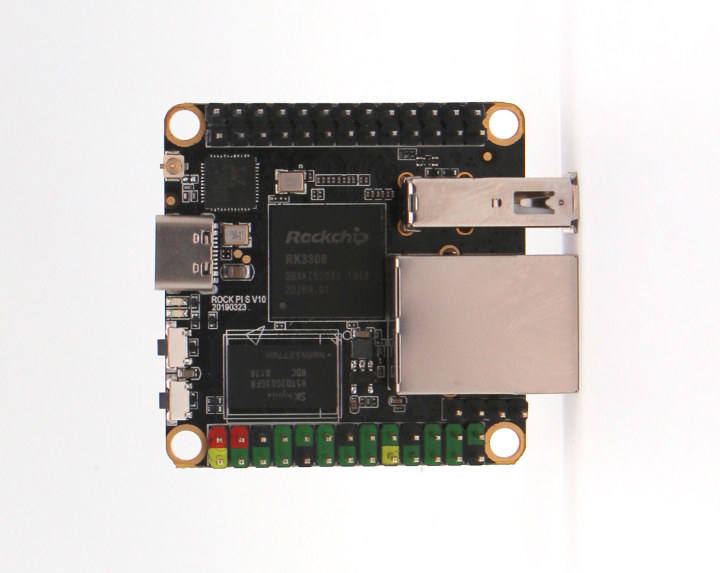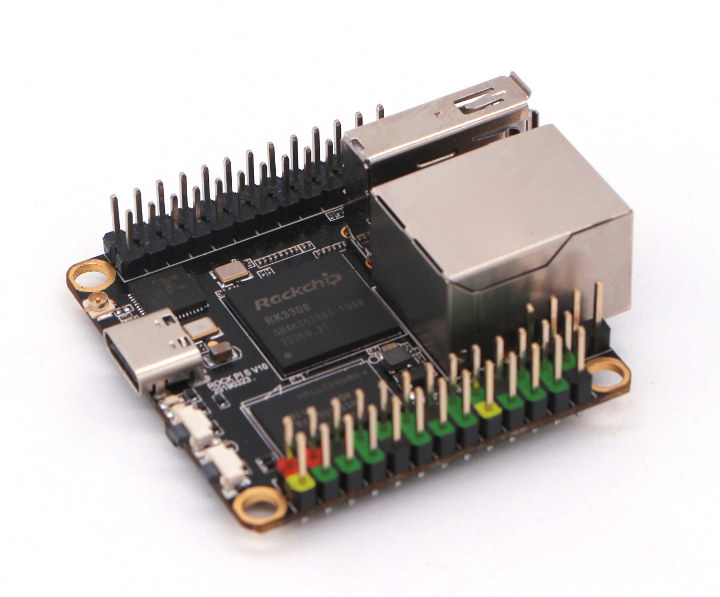Radxa launched their low cost ($40) Rock Pi 4 SBC powered by Rockchip RK3399 processor a little over 18 months ago. If you are subscribed to their mailing list, the company has now sent an email entitled “” (no link available) that reports about v1.4 of the board with 4MB SPI flash onboard, an external WiFi antenna connector, and various other small changes, as well as the announcement of RockPi PoE HAT to power the board from an Ethernet cable, and an USB 3.0 eMMC card reader.
But what particularly caught my attention in the email was a new tiny single board computer powered by Rockchip RK3308 Cortex-A35 processor: Rock Pi S selling for as low as $9.9 with 256MB RAM, and targetting headless IoT & smart voice applications.

Rock Pi S board specifications:
- SoC – Rockchip RK3308 quad-core Arm Cortex-A35 processor with built-in VAD (Voice Activity Detector)
- System Memory –
- Storage – microSD card for OS storage media, optional 1/2/4/8Gbit onboard NAND storage for cost saving
- Connectivity
- 100Mbps Ethernet with optional PoE (additional HAT required)
- Optional 802.11 b/g/n WiFi 4 + Bluetooth 4.0 (via RTL8723BS) with external antenna
- USB – 1x USB 2.0 OTG type-C port, 1x USB 2.0 host type-A port
- Expansion – 26-pin Pi GPIO header, 26-pin voice/audio header
- Power Supply – 5V via USB-C port
- Dimensions – 3.8 x 3.8 cm

The company reports the first batch of ROCK Pi S boards is tested and so far proved to be working all well. The board currently runs Debian and buildroot build system is supported. The company has some samples in the office, and interested developers can contact the company to get a sample.
Rock Pi S will sell for $9.9 and up with the cheapest model coming with 256MB RAM, and a microSD card socket for storage. AFAIK, there’s currently no product page nor other public information available online for the new Radxa board except for the newsletter’s email.

Jean-Luc started CNX Software in 2010 as a part-time endeavor, before quitting his job as a software engineering manager, and starting to write daily news, and reviews full time later in 2011.
Support CNX Software! Donate via cryptocurrencies, become a Patron on Patreon, or purchase goods on Amazon or Aliexpress




